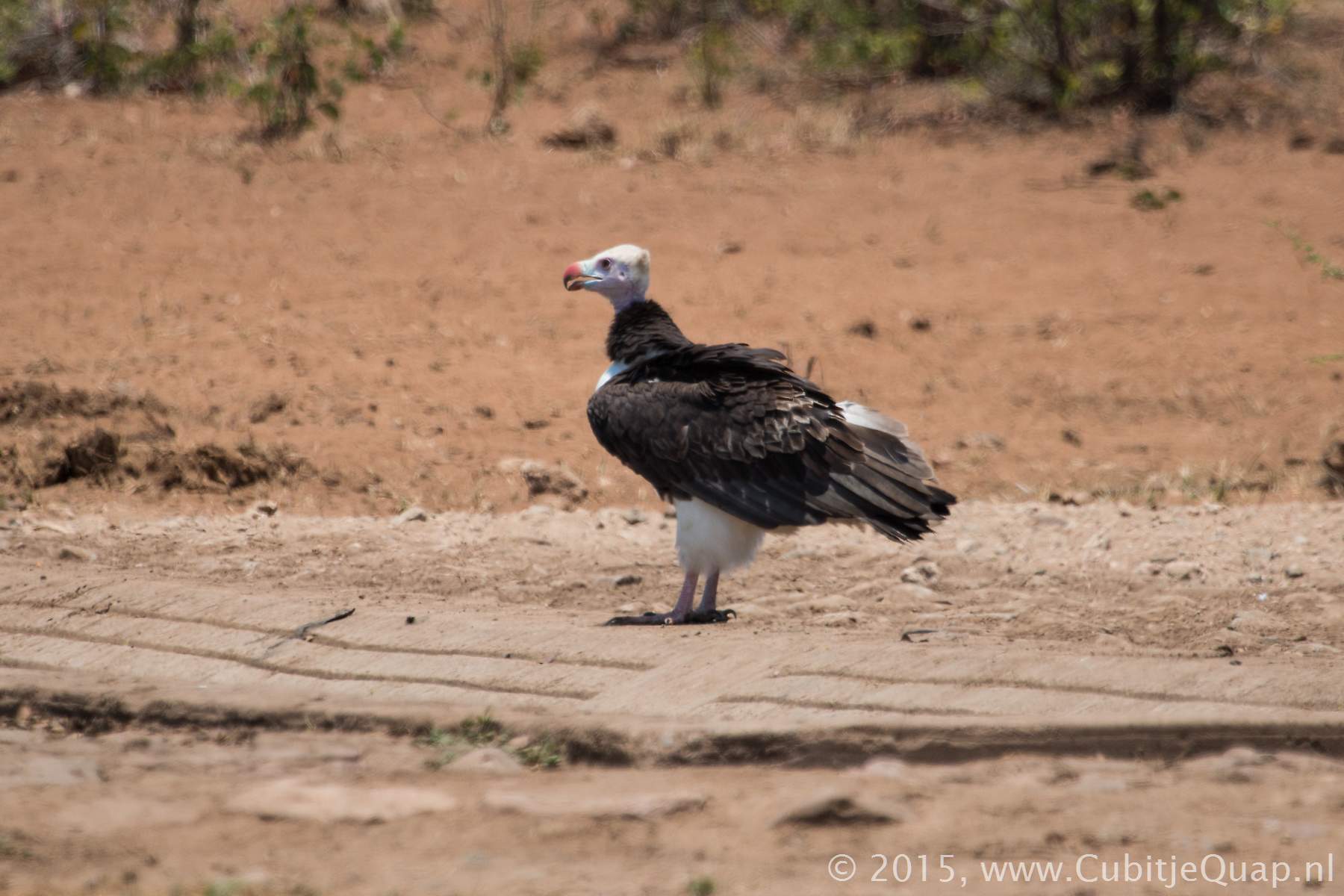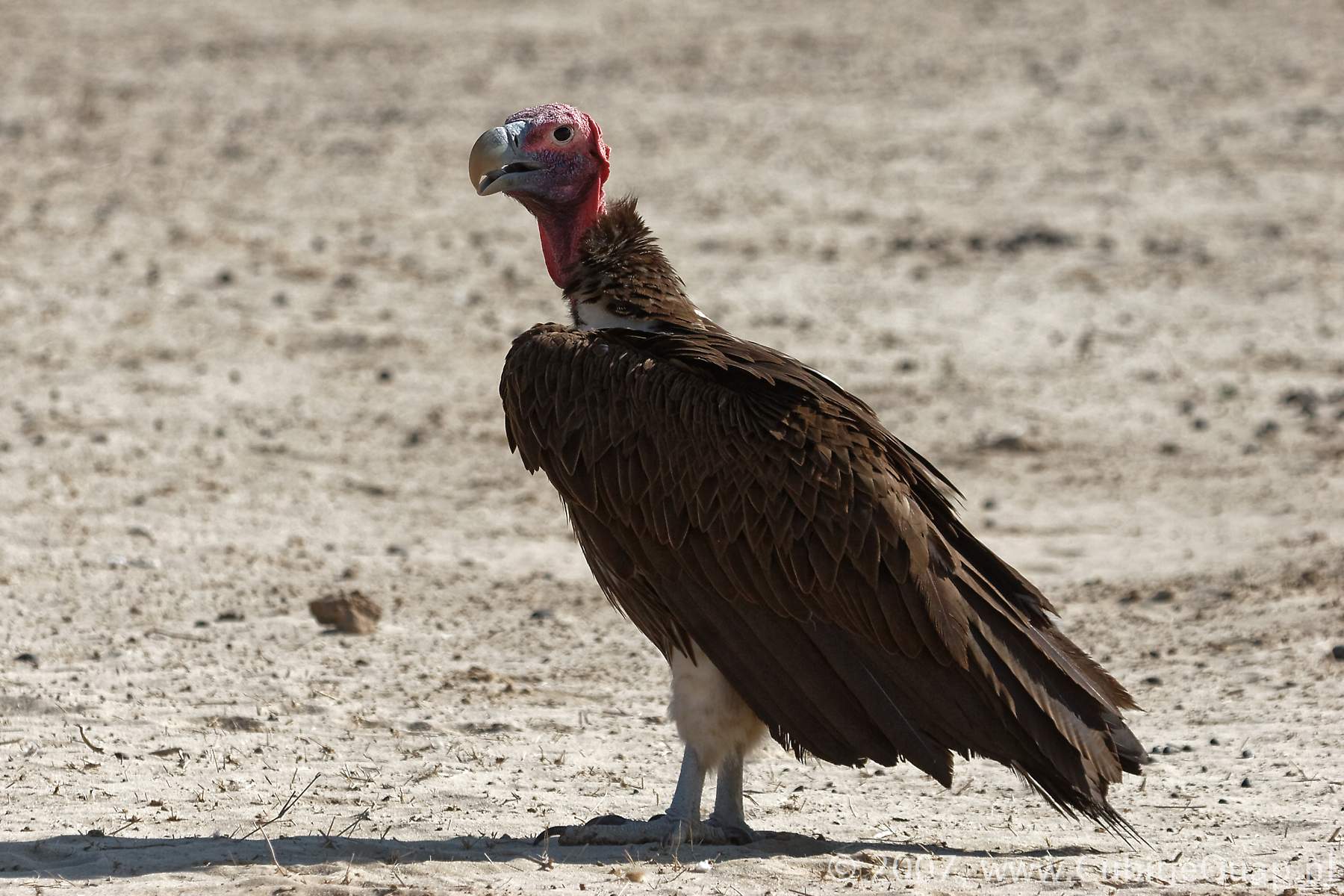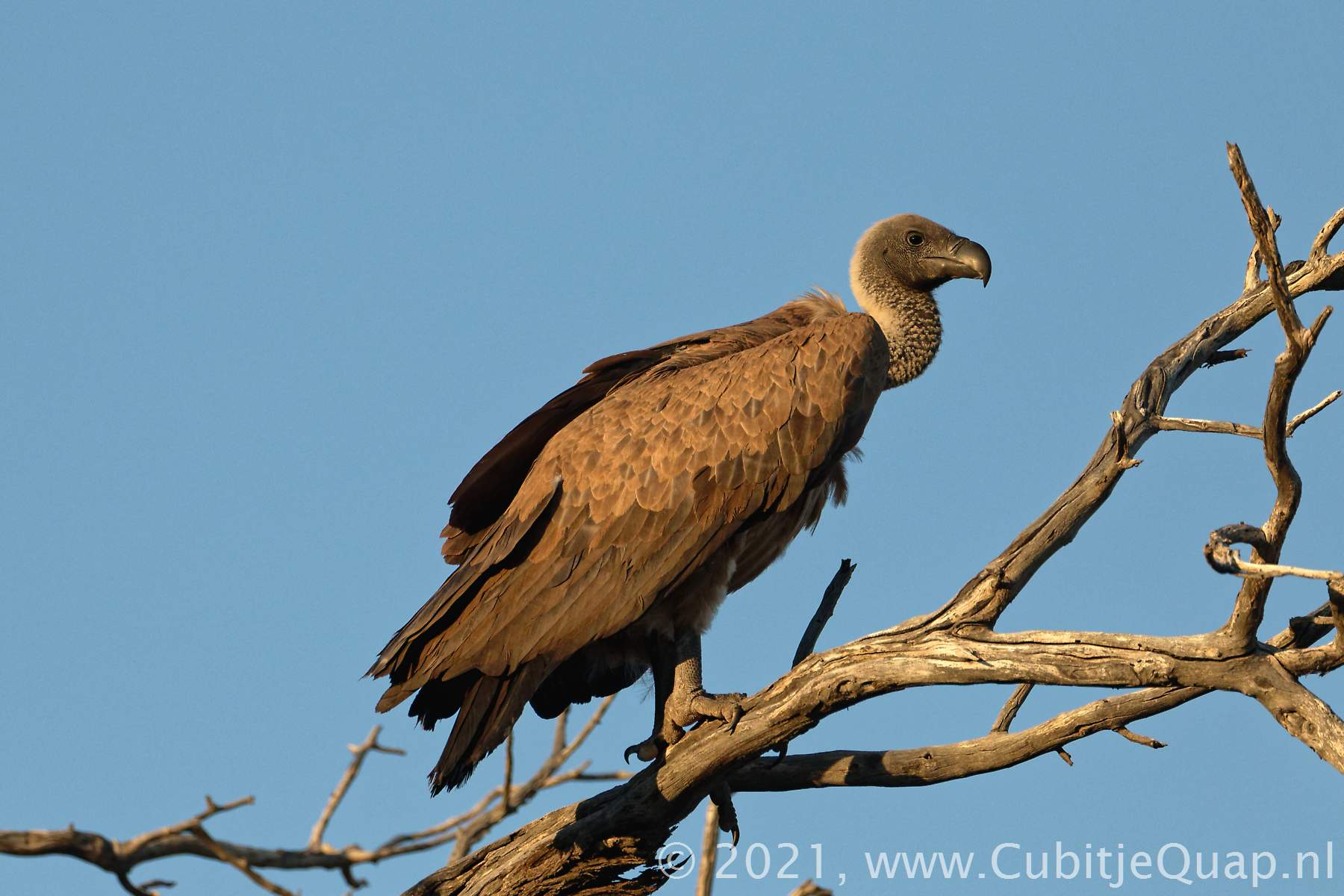Vultures Information page
Description
Large, specialised raptors, most of which scavenge carrion. They show a soaring flight, scanning for carcasses on the gound and they congregate in large numbers at a suitable carcass. They find carcasses exclusively by sight, not smell, although they wil also respond to predator calls and other raptors descending to find food-sources.They can spend considerable time on safe perches to ascertain that their intended food is dead. Only after a particularly brave bird has taken initiative, others will follow suit.savanna species have a distinct hierarchy generally based on body and bill size. The lappet-faced is at the top and the hooded at the bottom.
Species that have access to water will bathe regularly. Afther bathing, they will retreat to the bank or trees to dry and sunbathe with spread wings. In hot weather, they may stand in water for cooling purposes.
A particular characteristic of many vultures is a semi-bald head, sometimes without feathers or with just simple down. Historically, it was thought that this was due to feeding habits, as feathers would be glued with decaying flesh and blood. However, more recent studies have shown that it is actually a thermoregulatory adaptation to avoid facial overheating; the presence or absence of complex feathers seems to matter little in feeding habits, as some vultures are quite raptorial.
All vultures are monogamous with long-term pair bond, and territorial around the nest sire. They build stick-platform nests, which are often reused annually. Incubation and feeding the young is done by both parents.
Scientific names
Necrosyrtes = corpse pullerAegypius = refers to greek mythology, Aegypius and Neophron were changed into vultures by Zeus
Gyps = greek for 'griffon vulture'
monachus = monk
occipitalis = latin: reference to the back of the head
trachelos and otos = throat and ear
africanus = refers to its geological distribution
Birds in this category
Interesting links
Wikipediafatbirder.com




